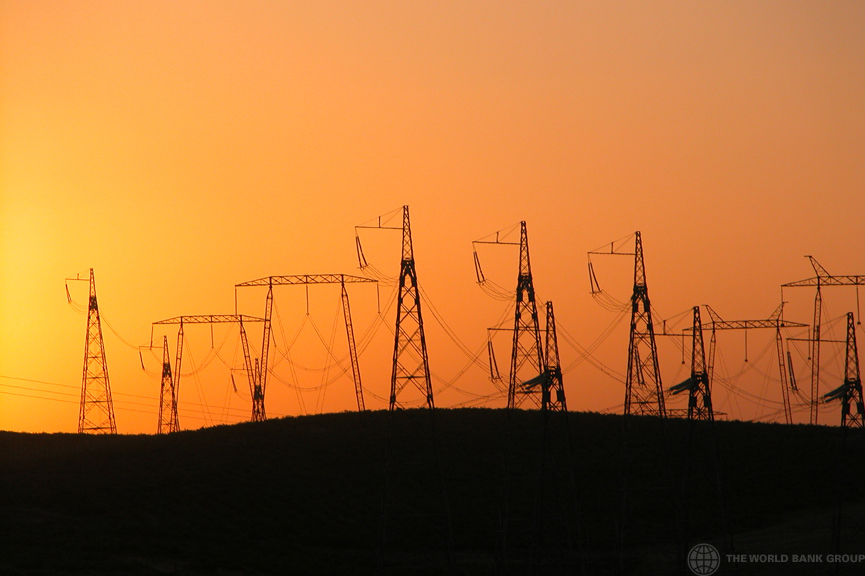
World Bank Shies Away from Coal But Embraces Natural Gas
Yesterday, the World Bank’s Executive Directors agreed to a new ‘Energy Sector Directions Paper’ which lays out the expected course for the Bank’s future energy lending. While there are some encouraging indications that the Bank will move away from coal financing, the increased emphasis on natural gas and large hydropower is likely to undermine the strategy’s stated objective of increasing energy access for the poor.
 Yesterday, the World Bank’s Executive Directors agreed to a new ‘Energy Sector Directions Paper’ which lays out the expected course for the Bank’s future energy lending. While there are some encouraging indications that the Bank will move away from coal financing, the increased emphasis on natural gas and large hydropower is likely to undermine the strategy’s stated objective of increasing energy access for the poor.
Yesterday, the World Bank’s Executive Directors agreed to a new ‘Energy Sector Directions Paper’ which lays out the expected course for the Bank’s future energy lending. While there are some encouraging indications that the Bank will move away from coal financing, the increased emphasis on natural gas and large hydropower is likely to undermine the strategy’s stated objective of increasing energy access for the poor.
In the new strategy, the Bank outlines as a priority increased access to energy for the billions of the world’s poorest people without access to modern energy services. This is welcome, as Oil Change International’s analysis of the World Bank Group’s energy lending finds that less than 10 percent of the institution’s energy projects from 2008 to 2012 target increased energy access for the poor.
A shift towards supporting access to energy for the world’s poorest people would be a critical step to put the Bank’s energy portfolio in line with the Bank’s overall mission of poverty alleviation.
The Bank’s Board of Directors also agreed in the strategy that the Bank will “provide financial support for greenfield coal power generation projects only in rare circumstances.”
A true shift away from financing coal would be a boon for the climate and public health, particularly from an institution that has financed over $5.5 billion in coal projects over the last five years. There has likely been even more support for coal through the Bank’s policy loans that finance policy development and infrastructure in support of conventional energy and through financial intermediaries that the Bank has funded, where the lending recipients are rarely disclosed.
Agreement from Executive Directors on moving away from coal financing can help send the Bank in the right direction, but as with the goals of increasing energy access, the proof of moving away from coal will be in how the strategy is implemented.
The decisions that get made on the financing of future coal projects – notably the coal plant currently being considered in Kosovo – will be telling.
More disconcertingly, the strategy is clear about the Bank’s intent to increase financing for natural gas production and large hydropower generation. This would commit the Bank to a continued course of large, centralized power projects that are not going to solve the climate crisis, nor are they likely to be effective in supporting energy access for the poor.
Large-scale fossil fuel projects are not the answer for energy poverty, and neither are large dams – electricity from these installations rarely reaches the poor. The International Energy Agency has said that to achieve the goal of universal energy access by 2030, 70 percent of those without access in rural areas would be served by off-grid and mini-grid systems – not large-scale, grid-tied power.
In spite of claims that natural gas and large hydropower are “low-carbon” options, both natural gas and large hydropower have been shown to be quite capable of producing large amounts of greenhouse gases.
The International Energy Agency’s World Energy Outlook states: “Different assumptions about the level and impact of methane emissions can have a profound effect on the perception of gas as a “cleaner” fossil fuel.” Depending on assumptions about the leakage rates of methane, natural gas can in fact be a worse greenhouse gas emitter than coal.
The IEA has also made it clear that over two-thirds of today’s proven reserves of fossil fuels need to still be in the ground in 2050 in order to have a reasonable chance at preventing catastrophic levels of climate change – this includes stopping new exploration. This is entirely inconsistent with the Bank’s stated intent of supporting natural gas development, and particularly exploration for new resources.
Greenhouse gas emissions from the reservoirs created by large hydropower projects can also be quite significant – not to mention the myriad local environmental and human rights concerns surrounding the construction of large dams.
The World Bank’s President Kim has made it clear that addressing climate change is a priority during his tenure. The energy strategy could be a step forward in this initiative, but the test of this commitment will be changes in the Bank’s operations, and particularly its energy portfolio, going forward.
